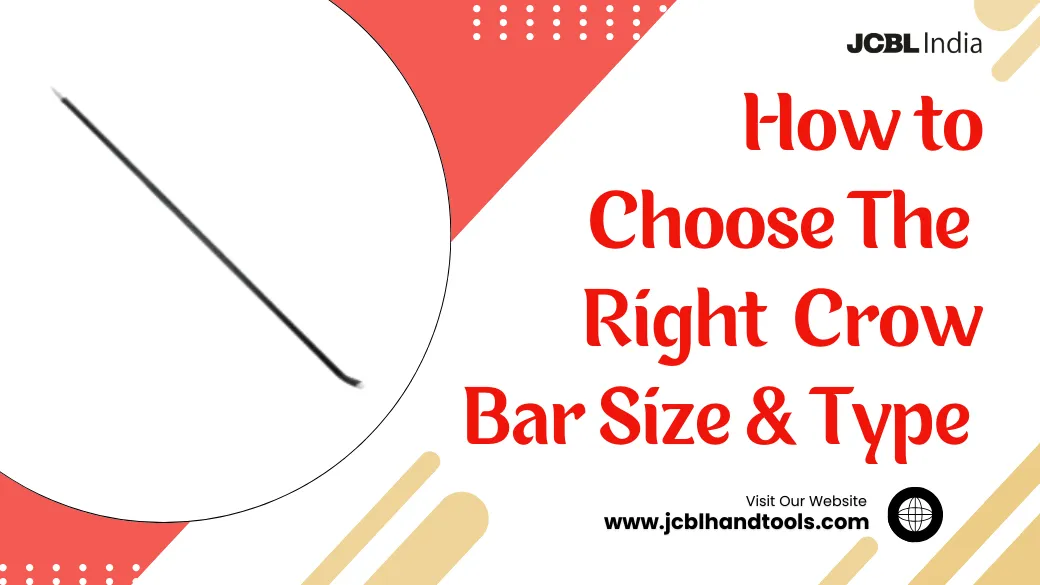Brick Bolster Chisel vs. Masonry Chisel: Key Differences

Chisels are vital hand tools in woodworking, masonry, joinery and crafting due to their ability to precisely cut, carve and shape hard materials. You can cut and carve hard materials like wood, stone, and metal. Although these tools are considered versatile, not all chisels serve the same purpose. When working with bricks, stone, or concrete, choosing the right chisel is crucial for precision, efficiency, and safety.
Two commonly used chisels in masonry work are the Brick Bolster Chisel and the Masonry Chisel. While they may appear similar, they have distinct differences that impact their effectiveness in specific tasks. In the blog, “Brick Bolster Chisel vs. Masonry Chisel: Key Differences”, we’ll break down their features, uses, key differences, and tips on choosing the right chisel for your project.
Let’s Learn The Basics
Before we dive into the differences, let’s understand what these chisels are and how they function. Both the Brick Bolster Chisel and the Masonry Chisel are designed for cutting and shaping masonry materials, but they differ in size, purpose, and precision.
What is a Brick Bolster chisel?
A brick bolster chisel is a wide-bladed chisel designed for cutting bricks and blocks cleanly. It typically has a broad cutting edge ranging from 2 to 4 inches, allowing for easy splitting of bricks, stones, and concrete blocks. This chisel is made from hardened steel for durability, thus preferred for heavy-duty construction. This type of chisel is used with a hammer or mallet to apply force and create a clean break along the material.
Common Uses
- Cutting bricks to specific sizes.
- Splitting concrete blocks.
- Removing excess mortar in masonry work.
- Creating precise breaks in paving stones.
What is Masonry Chisel?
A masonry chisel or mason chisel is a more versatile tool used for carving, shaping, and chipping masonry materials rather than just splitting them. It has a narrower blade compared to a brick bolster chisel, making it ideal for delicate or detailed work. Masonry chisels are commonly used in sculpting stone, removing mortar, or refining brick edges.
Common Uses
- Carving and shaping stone or brick.
- Removing excess mortar between bricks.
- Cleaning up rough masonry edges.
- Making detailed engravings in masonry work.
Also Read: Types Of Chisels and Their Uses
Brick Bolster Chisel vs. Masonry Chisel: Key Differences
While both tools are essential for masonry work, they serve distinct purposes. Here’s a detailed comparison:
Design
The design of a brick bolster chisel features a wide, flat blade ranging from 2 to 4 inches, allowing for clean and straight cuts in bricks and concrete blocks. In contrast, a masonry chisel has a narrower blade, often beveled or pointed, designed for detailed chipping and shaping of masonry materials. The difference in blade width and shape determines their effectiveness in specific tasks, with the bolster chisel excelling in breaking large materials and the masonry chisel offering precise control for intricate work.
Material
Both chisels are crafted from hardened steel to withstand the force of repeated hammer strikes, ensuring durability and longevity. However, brick bolster chisels often have a thicker steel body to endure the heavy impact needed for cutting through bricks and concrete blocks. Masonry chisels, on the other hand, may have a slightly refined edge that allows for intricate detailing and precision shaping. The quality of the material plays a crucial role in maintaining sharpness and resisting wear over time.
Purpose
A brick bolster chisel is specifically designed for splitting and cutting bricks, concrete blocks, and paving stones with ease. Its wide blade distributes force evenly, ensuring a clean break along the material. In contrast, a masonry chisel is meant for shaping, carving, and refining masonry surfaces, making it ideal for removing excess mortar, engraving, or creating fine details in stonework. Choosing the right chisel depends on whether the task requires forceful cutting or delicate sculpting.
Precision Level
When it comes to precision, a masonry chisel is the superior choice. Its narrow and often pointed edge allows for controlled chipping, shaping, and refining of masonry surfaces. This makes it suitable for delicate work such as engraving and mortar removal. A brick bolster chisel, on the other hand, is designed for brute force rather than finesse. It offers a lower level of precision since it is primarily used to break bricks or blocks in a single strike rather than shape them intricately.
Applications
Brick bolster chisels are widely used in bricklaying, demolition, and construction work, where clean and quick cuts in masonry materials are necessary. They are essential for cutting bricks to size, breaking concrete blocks, and shaping paving stones. Masonry chisels, on the other hand, find their applications in stone carving, mortar removal, and surface detailing. Professionals working on restoration projects, decorative masonry, and intricate stonework often rely on masonry chisels for their ability to shape and refine masonry with precision.
How to Choose the Right Chisel for Your Project
Selecting the right chisel depends on the task at hand. Here are some key factors to consider:
- Type of Work: If you are cutting bricks or concrete blocks, go for a brick bolster chisel. If you need shaping and detailing, opt for a masonry chisel.
- Precision vs. Power: For high-precision tasks, a masonry chisel is the better choice. For forceful splitting, use a brick bolster chisel.
- Material Being Worked On: Different chisels are designed for different materials. Ensure your chisel is made of hardened steel to withstand heavy impacts.
- Chisel Size: If you need wider cuts, choose a brick-bolster chisel. For fine detailing, a smaller masonry chisel works best.
- Type of Hammer: A club hammer or a mallet is commonly used with both chisels, but ensure the hammer’s weight aligns with the force needed for the task.
Safety Tips for Using Chisels
Using chisels improperly can lead to injuries. Here are some safety tips to keep in mind:
- Wear Protective Gear: Always use safety goggles, gloves, and a dust mask to protect yourself from flying debris.
- Use the Right Hammer: A hammer that is too light or too heavy can affect control and precision.
- Ensure a Firm Grip: Hold the chisel securely to prevent slipping. Some chisels come with hand guards for added safety.
- Position the Chisel Correctly: Angle the chisel properly to avoid unwanted breakage or damage.
- Maintain Your Tools: Keep chisels sharp and free of rust for optimal performance. A dull chisel requires more force and increases the risk of accidents.
- Work on a Stable Surface: Avoid working on an unstable surface, as it can lead to inaccurate strikes and potential hazards.
Conclusion
Both brick bolster chisels and masonry chisels play crucial roles in masonry work, but choosing the right one depends on your specific needs. If you require clean, straight cuts, a brick bolster chisel is your go-to tool. If you need detailed shaping and precision work, a masonry chisel is the better option.
No matter which chisel you choose, always prioritize safety and tool maintenance for the best results. Investing in high-quality chisels ensures durability and efficiency in your projects.
Looking for reliable and durable chisels? JCBL Hand Tools offers a wide range of high-quality masonry tools to meet all your construction and DIY needs. Check out our collection today and equip yourself with the right tools for the job!



